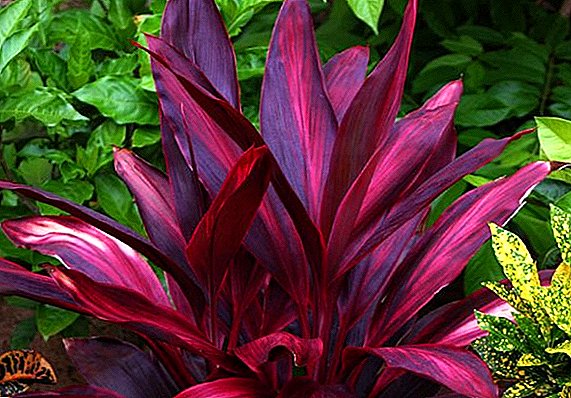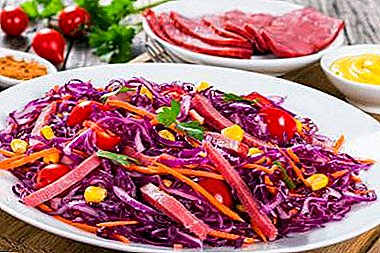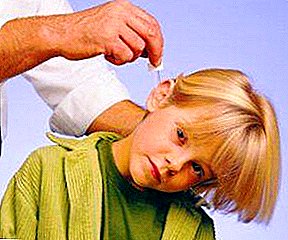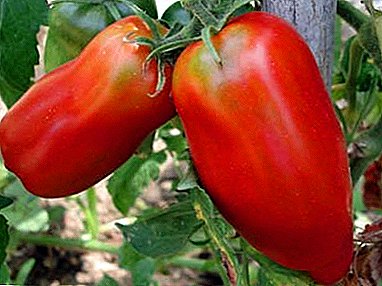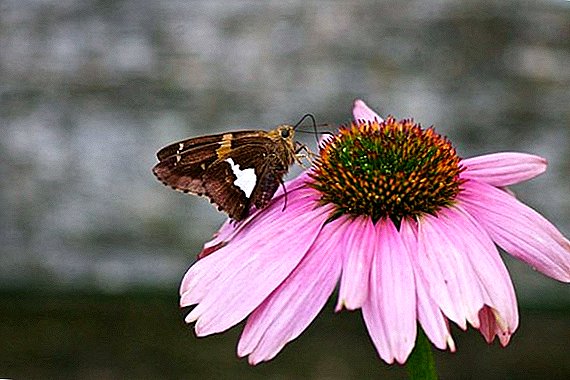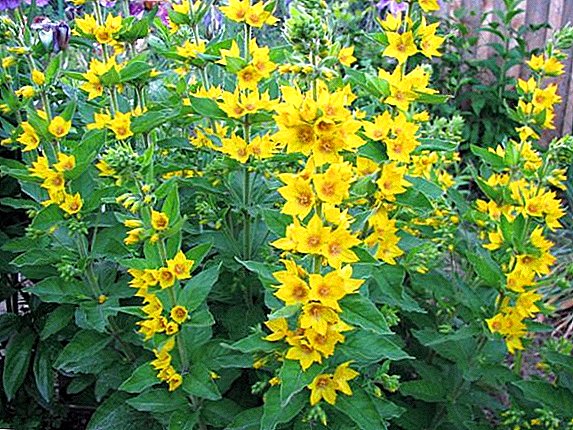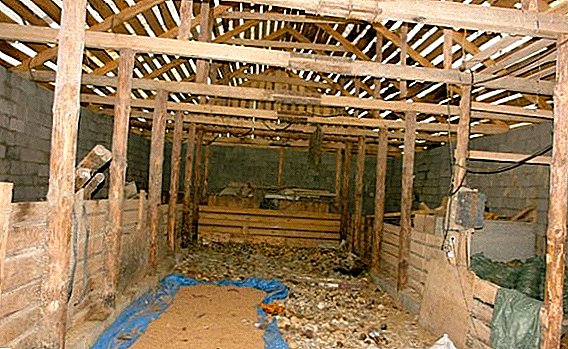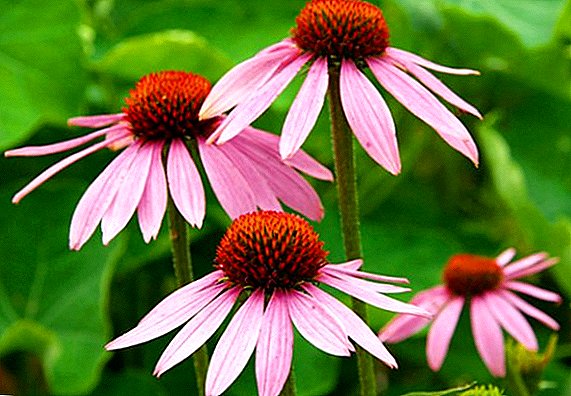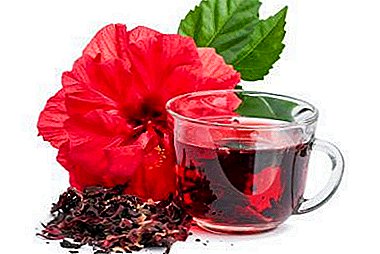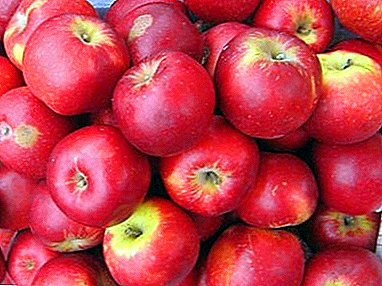
Apple Aport blood red one of the oldest and well-known varieties.
He is quite unpretentious, it is easy to care for him, and its fruits are different rich taste and large size.
However, this variety has its own characteristics that cannot be neglected.
What kind is it?
 Apple varieties Aport blood-red is autumn variety.
Apple varieties Aport blood-red is autumn variety.
Fruit ripen by the end of September and early October.
Tree possesses medium frost resistance.
Aport blood red refers to self pollinated fruit trees. Neighborhood with other varieties for him is not mandatory.
Autumn apple varieties include: Borovinka, Volzhanka, Jonathan, Petrov's Dessert, Dolgo (China), Zhigulevskoe, Imrus, Kalvil Snow, Carpet, Cinnamon Novoe, Kutuzovets, Young Naturalist, Uspenskoe, Uslada, Prima, Gift to Gardeners, Pepin Shafranny, Naturalist, Uspenskoe, Uslada, Prima, Gift to Gardeners, Pepin Shafranny, Naturalist, Uspenskoye, Yaslada, Prima, Gift to Gardeners, Pepin Shafranny, Naturalist, Uspenskoye, Uslada, Prima, Gift to Gardeners, Pepin Shafranny , Rock, Sunny, Welsey, Flashlight, Ural Bulk, Screen.
Description of a grade Aport Bloody red
Apple varieties Aport blood-red has a standard structure for tall apple trees. Consider the appearance and characteristics of the tree and fruit in more detail.
Strong-growing, tall tree, the height on average is 6 meters, the diameter of the crown reaches 7 m. Crown wide, round, spreading. The tree has medium branching, branches "skeletal", are not densely.
 Aport blood red has large fruits, the weight of one apple is 240-260 g, with due care and favorable climatic conditions some specimens reach 900 g
Aport blood red has large fruits, the weight of one apple is 240-260 g, with due care and favorable climatic conditions some specimens reach 900 g
The shape of the fruit is slightly ribbed, shirokokonicheskaya.
Possess even blood-red blush that can be seen on the pale yellow main skin color.
The color of the pulp varies from white to cream, the structure is medium-grained, the pulp itself has a pronounced sweet aroma.
The taste of the fruit is sweet and sour, juicy with a hint of spice.
A photo







Breeding history
Aport is considered one of the most well-known varieties of apples. For the first time its name was announced in records dated Year 1175 one of the then monasteries.
In Poland, the variety took root successfully and spread to the territory of Ukraine, and then - to Russia. Already in 1779 breeder Bolotov called Aport one of the oldest and proven varieties.
In the 19th century Aport brought to Western Europe, in the same century the species became widespread in Canada and the United States.
Growing and distribution region
 The original homeland of Aport is unknown for certain and causes a lot of controversy, but most gardeners and botanists tend to think that the most comfortable conditions for the growth and fruiting of this tree are located in mountainous areas and in middle climatic zones.
The original homeland of Aport is unknown for certain and causes a lot of controversy, but most gardeners and botanists tend to think that the most comfortable conditions for the growth and fruiting of this tree are located in mountainous areas and in middle climatic zones.
Especially popular Aport blood red became in Alma-Ata region, it was there that the fruits of the trees reached their greatest sizes, and the number of kilograms of harvest per season exceeded the standard harvest in other areas.
Unfortunately, the tree has a low frost resistance, does not tolerate cold. In areas where in winter, the degree column falls below -25, there is a chance that the apple tree will not tolerate frost, or else it will give a small amount of harvest.
The most suitable for breeding and keeping apple varieties Aport blood-red are the regions: all territory Ukraine, the middle belt of Russia, mountain areas with a temperate climate.
For planting in said region suitable varieties Papirovka, Grushovka Winter, Golden Delicious, Antonivka dessert, Idared, August, Feast, Bellefleur Kitaika, Lobo Yandykovskoe, Anniversary Moscow, Fuji Memory Ulyanischeva, Rennet Symyrenko, Cliff, LADA, Summer striatum , Korobovka, Korey, Kvinti, Calvil Snow, Bryansk, Bolotovskoe.
Yield
The first productive harvest Apple tree Aport blood red gives in 10-15 years.
IMPORTANT: with proper care, fruiting continues until the age of 40
Apple harvest Aport blood-red usually brings in the second half of September. Aport possesses pronounced cycles of fruiting, it is four years.
 This phenomenon is due to the fact that the apple tree is cut fruit buds. A tree rests for a year, sometimes without bringing fruit at all.
This phenomenon is due to the fact that the apple tree is cut fruit buds. A tree rests for a year, sometimes without bringing fruit at all.
In the second year, the apple tree brings a small crop - 20-40 pcs. apples (depending on the size and age of the tree).
In the third year, the yield results are already more satisfactory, the number of fruits is average - about 60 kg.
In the fourth year, the apple tree again gives a large number of fruits, the crop weight for this season reaches 180 kg. Then the cycle repeats again.
Apples of Aport blood-red variety are recommended to be stored in the basement or cellar.
IMPORTANT: It is forbidden to keep their fruits in the same compartment with potatoes.
If you store apples on the balconies or loggias, in extensions to the house or in garages, you must additionally warm the boxes in case winter is too cold.
Planting and care
Careful attention to the development of the tree is necessary in the first years of life and during fruiting.
When purchasing an Aport seedling, it is necessary to carefully examine the root system.
IMPORTANT: Those specimens in which the root neck is not visible or in which the trunk is severely bent are not suitable for disembarkation and may die before the first harvest.
 Biennial seedlings (it is at this age that apple trees are often sold in nurseries and in the markets) should be shortened to 80 cm if roots shorter than 40 cm, tree pruned even lower.
Biennial seedlings (it is at this age that apple trees are often sold in nurseries and in the markets) should be shortened to 80 cm if roots shorter than 40 cm, tree pruned even lower.
This is done in order to avoid exhaustion of a young tree due to the growth of leaves on the crown.
When buying, the roots are often damaged and unable to adequately feed a disproportionately large crown.
TIP: To improve rooting, use special solutions (Kornevin, heteroauxin)
The place in which the young will grow, should have good drainage. The tree is placed in a special hole for planting.
IMPORTANT: In the hole it is necessary to put together a talker into which the roots will dip.
After that, backfill with soil. It is placed evenly, layer by layer. Each of the levels for compaction should be moistened.
Admixture of garden compost will not interfere, it will increase the fertility of the soil. After all the manipulations, the tree is reinforced with a vertical peg.
REMEMBER: Saplings whose age exceeds two years, you can not fall asleep root neck. When it is backfilled, a fungus can develop due to the beauty of the bark.
 Due consideration should be given to watering the Aport.
Due consideration should be given to watering the Aport.
Apple tree of this variety must be plentifully and regularly irrigated.
If the tree does not get enough moisture, you will not achieve a good harvest.
Instead of large and juicy apples, you will receive small fruits that are unlikely to exceed the size of the usual "wild". Yes, and taste properties will be lost.
During the rest period from harvest, the apple tree does not need abundant watering.
If during these years you continue to give a tree a large amount of moisture, it will waste the resources received not on the size and number of fruits, but on gardening.
The area where the apple grows Aport, It is recommended to plant a clover or turf to preserve the level of moisture. This is especially important in the fruiting period. The following year, after the planting, the crown formation begins.
IMPORTANT: shorten young shoots, cut sprouts that go inside the crown or else move away from it at an acute angle.
The first few years of the tree’s life must be thoroughly cleaned of the surrounding soil from weeds, weed regularly and loosen it. Fertilizer manure and mowed grass will also benefit.
Diseases and pests
 Aport blood red suffers from standard apple diseases.
Aport blood red suffers from standard apple diseases.
Cancer apple. On the trunks and crown appear thickening. Often the crown is damaged and a decaying process begins. In Aport, the disease manifests itself in the form of both closed and open lesions.
In the first case, growths are formed, in the second - indentations. Around the wounds and growths appears the so-called border of a red shade, and behind it additional growths. The cause of the disease is most often too low temperatures.
Treatment: At the initial stage of the disease, the damaged areas are lubricated with a garden pitch or a borod fluid. All damaged processes must be removed and burned outside the garden.
Black cancer not much different from the usual apple cancer. Causes disease wound parasite. Usually penetrates the bark of the tree due to damage or intentional pruning, which is performed at lower temperatures.
Cracks form on the surface of the tree, the upper layer exfoliates. Black cancer infects not only the trunk of Aporta, but also fruits with leaves.
Treatment: To prevent the disease, it is necessary to disinfect wounds. Treatment is similar to apple cancer.
Scab. The pathogenic bacterium spreads due to controversy. In spring, young foliage from rotten leaves that have fallen from autumn are often infected.
 On fresh leaves, light yellow lesions appear with an oily sheen. After drying leaves, the disease passes to the ovary, formed fruits and buds.
On fresh leaves, light yellow lesions appear with an oily sheen. After drying leaves, the disease passes to the ovary, formed fruits and buds.
Treatment: The most common way to deal with scab is spraying with urea after autumn leaf fall. Special preparations are also used against scab (“Scor”, Bordeaux liquid, “Scor”, “Cumulus”, etc.)
Mealy dew. In this disease, a white, "floury" plaque appears on the leaves of the tree. If you do not fight him, over time he gets a brown tint. The leaves dry up, the disease penetrates the trunk.
If the disease is not treated in time, the apple tree may die.
Treatment: in a bucket of water dissolve the drug "Topaz" in an amount of 2 ml. Also suitable for "Scor." Sprinkle the tree abundantly with this solution, after fruiting, disinfect with a Borodian liquid.
Aport blood-red easily survives, but often does not suit gardeners cyclical fruiting. As in the care of any other apple, Aport should be regularly examined for diseases and with the slightest symptoms taken for treatment.
If you are used to taking trees for the purpose of further selling its fruits, but you cannot afford to plant a large number of copies - Aport is not the best choice. But if you plant a tree for yourself, it will not disappoint you.


